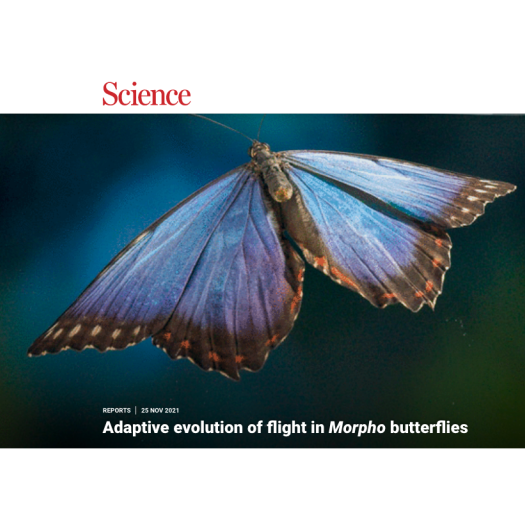Évolution adaptative du vol chez les papillons Morpho

Adaptive evolution of flight in Morpho butterflies

Adaptive evolution of flight in Morpho butterflies
Une équipe de scientifiques a cherché à comprendre l’évolution du vol chez les papillons, comment un changement d’habitat affecte l’évolution du vol chez les papillons morpho.
Forests are often crowded and complex, presenting numerous and varied challenges for species flying through them. Le Roy et al. looked at the Amazonian Morpho butterfly group and found differences in both morphological and behavioral perspectives across species that occupy the canopy relative the understory. Species that evolved to occupy the canopy have improved gliding abilities because of a combination of wing shape and flight behavior. The combination of these traits varied across species even within this single genus, which suggests that there was not one route that led to colonization of this part of the forest.
The diversity of flying animals suggests that countless combinations of flight morphologies and behaviors have evolved with specific lifestyles, thereby exploiting diverse aerodynamic mechanisms. How morphology, flight behavior, and aerodynamic properties together diversify with contrasting ecology remains to be elucidated. We studied the adaptive codivergence in wing shape, flight behavior, and aerodynamic efficiency among Morpho butterflies living in different forest strata by combining high-speed videography in the field with morphometric analyses and aerodynamic modeling. By comparing canopy and understory species, we show that adaptation to an open canopy environment resulted in increased glide efficiency. Moreover, this enhanced glide efficiency was achieved by different canopy species through distinct combinations of flight behavior, wing shape, and aerodynamic mechanisms, highlighting the multiple pathways of adaptive evolution.